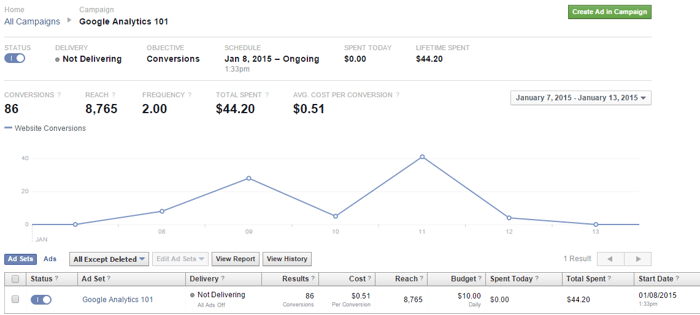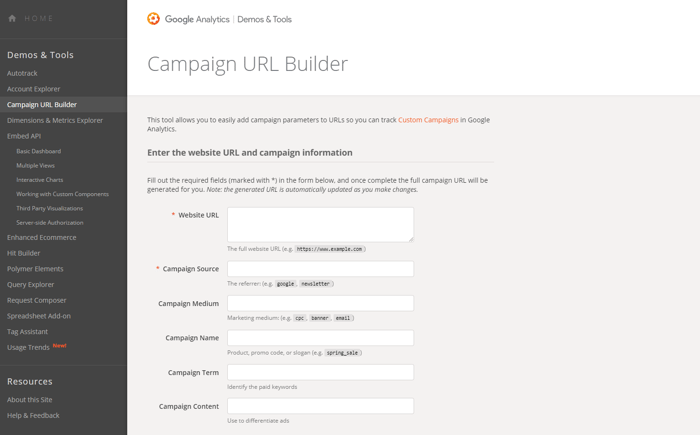
Social media is a significant part of most B2B marketing budgets and strategies. In fact, it accounts for about 20.9% of your budget, according to the latest CMO Survey. There’s just one problem; very few marketers know how to attribute ROI to their social media efforts.
According to the same survey, only 11.5% of marketing leaders report they have proven the impact of social media quantitatively, and 47.9% report they have not been able to show any impact.
Tackling social media with the hope that it will work is a horrible idea. Executives don’t appreciate a blind faith approach, which is probably why 80% of CEOs admit they’re not impressed by the work done by social media marketers.
If you want to avoid being seen as an untrustworthy marketer, then you need to show the value of your social media activity.
But how can you do that?
B2B Social media marketing ROI isn’t as elusive as you might think. Yes, it can be difficult to demonstrate, considering that most of its value is qualitative and focused on building relationships, growing awareness, and encouraging engagement. But even with that, you can show it’s worth.
The key is to plan and execute your social media strategy with ROI always in the forefront of your mind. You can do this by following a few simple steps:
1. Define Your Business Goals
Before setting out to measure B2B social media ROI, you have to determine your business goals. These are the overarching goals of your company that your marketing efforts need to help achieve.
Typically, these goals are set forth by the executives and trickle down to each team. However, there can also be marketing-specific goals, sales goals, and customer support goals. The good news is that social media can impact all of these goals in some way.
The key is to make sure that, as you define each goal, you also define how you can determine ROI for that goal. For example, if your objective is to increase sales, the ROI will be a dollar amount.
If your goal is to increase brand awareness, ROI will be something such as social media follows gained or engagement in the form of likes, comments, shares, etc.
It’s important to remember to be as specific as possible. For example, a goal of, “We need to sell more” is not as helpful as a goal that states, “We need to sell X services by the end of the first quarter.”
And a goal of “increase brand awareness” is not as valuable as a goal that states, “We need to increase overall website visitors by 10% a month with 20% of traffic visiting our landing page to download a free white paper.” The more specific your business goal, the more specifically you can attribute social media ROI.
2. Align Your Social Media Goals with Your Business Goals
Once you have determined your goals, it’s time to align them to your business objectives. This is how you break down your big picture social media strategy into more meaningful and measurable pieces. This is also the time to figure out the KPIs for your social media goals.
For example, let’s go back to the goal of selling services. There can be multiple specific social media goals that work toward this.
Sell services through paid advertising on Facebook
The KPIs for this goal would be "conversions from links clicked on the paid social media campaign", which you can set up in Facebook Ads.

Drive social media users to a specific landing page for sales
The KPIs for this goal can be "traffic to the landing page coming from social media", which you can identify using Google Analytics.
On the other hand, a goal of brand awareness could be broken down per social media channel. For example, you can track brand awareness on LinkedIn by the number of followers you’ve gained as well as interaction on your LinkedIn content in the form of Likes, Comments, and Shares. Or, you can monitor how many times your brand has been mentioned in Social Media conversations by using tools such as HubSpot.

Some common social media KPIs include:
- Lead Generation
- Customer Acquisition
- Community Growth
- Engagement
- Website Traffic
3. Track Social Media Conversions
Once you have your goals and KPIs, the next step is to do your due diligence and make sure you can track your social media efforts. For this, it’s important that you have a social media analytics tool in place or a social media marketing expert who can easily track the quantitative benefits of your efforts.
One valuable tool is the Google Analytics Campaign URL builder.

This tool is invaluable for creating UTM (Urchin Tracking Module) tracking codes for all of your social media links. What the UTM code does is attach to a custom URL in order to track a source, medium or campaign name. This makes it easy to see how your social media campaigns perform against your traffic and conversion goals set up in Google Analytics.
Beyond tracking links, you can track social media conversions by using a multi-touch attribution model. For social media, the most common model is the social-focused attribution model, which connects top-of-the-funnel interactions with bottom-of-the-funnel conversions.
For example, you could track a post with content focused on your services with unique pageviews on your website, time spent on the page, interactions on the post, email signups, etc. Then, from there assign values to each metric in order to determine its worth.
4. Assign Value to Your KPIs
One way to assign value to your KPIs is to determine the lifetime value multiplied by the conversion rate. This helps you figure out how much each potential visit is worth based on the percentage that it converts. Then, you should be able to definitively state how much you earn from each social media customer on average.
For example, let’s say your YouTube channel has 172,000 subscribers and over 24 million views. To determine the value of your channel and new videos, you would need to determine the value of a viewer. To do that, you would look at the lifetime value of a customer, which is a forecast of the entire future profit each customer will bring in—let’s say it’s $700. From there, you would need to figure out how many YouTube viewers visit your website and then become a customer—which you discover is around 10%. Therefore, the value of a YouTube video viewer is worth $70, so you can plan your YouTube strategy accordingly.
You can assign similar value for every social media channel and content campaign—whether you’re trying to determine the value of driving a Facebook user to a landing page for a white paper download or the value of a post on LinkedIn. As long as you track your social media traffic and metrics, you can show your ROI in dollar value.
If you need help demonstrating your social media ROI to management, contact KeyScouts today or download our eBook, designed to help you measure the ROI of seemingly "unmeasurable" B2B marketing activities.
We can set up a social media strategy that is built around your goals with easy-to-read monthly or quarterly reports that reflect your results.
Ready to contact KeyScouts?








